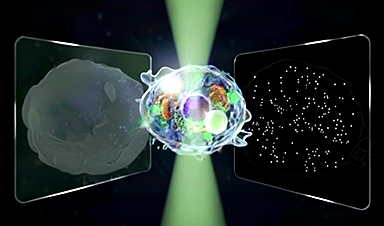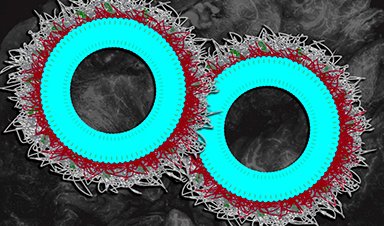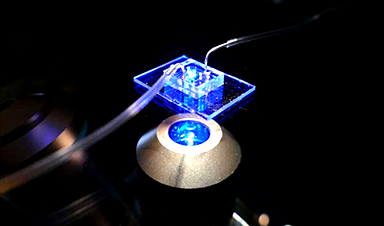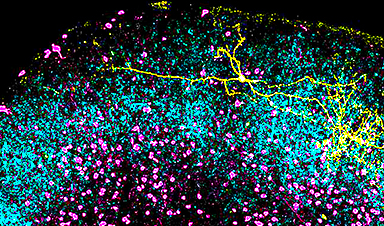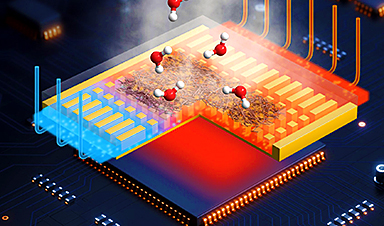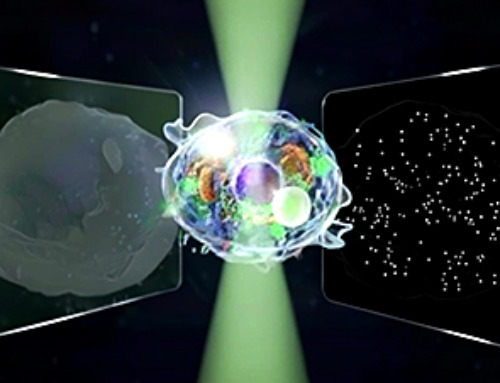The internet search engine of the future will be powered by artificial intelligence. One can already choose from a host of AI-powered or AI-enhanced search engines—though their reliability often still leaves much to be desired. However, a team of computer scientists at the University of Massachusetts Amherst recently published and released a novel system for evaluating the reliability of AI-generated searches.
Called “eRAG,” the method is a way of putting the AI and search engine in conversation with each other, then evaluating the quality of search engines for AI use. The work is published as part of the Proceedings of the 47th International ACM SIGIR Conference on Research and Development in Information Retrieval.
“All of the search engines that we’ve always used were designed for humans,” says Alireza Salemi, a graduate student in the Manning College of Information and Computer Sciences at UMass Amherst and the paper’s lead author.
“They work pretty well when the user is a human, but the search engine of the future’s main user will be one of the AI Large Language Models (LLMs), like ChatGPT. This means that we need to completely redesign the way that search engines work, and my research explores how LLMs and search engines can learn from each other.”
The basic problem that Salemi and the senior author of the research, Hamed Zamani, associate professor of information and computer sciences at UMass Amherst, confront is that humans and LLMs have very different informational needs and consumption behavior.
For instance, if you can’t quite remember the title and author of that new book that was just published, you can enter a series of general search terms, such as, “what is the new spy novel with an environmental twist by that famous writer,” and then narrow the results down, or run another search as you remember more information (the author is a woman who wrote the novel “Flamethrowers”), until you find the correct result (“Creation Lake” by Rachel Kushner—which Google returned as the third hit after following the process above).
But that’s how humans work, not LLMs. They are trained on specific, enormous sets of data, and anything that is not in that data set—like the new book that just hit the stands—is effectively invisible to the LLM.
Furthermore, they’re not particularly reliable with hazy requests, because the LLM needs to be able to ask the engine for more information; but to do so, it needs to know the correct additional information to ask.
Computer scientists have devised a way to help LLMs evaluate and choose the information they need, called “retrieval-augmented generation,” or RAG. RAG is a way of augmenting LLMs with the result lists produced by search engines. But of course, the question is, how to evaluate how useful the retrieval results are for the LLMs?
So far, researchers have come up with three main ways to do this: the first is to crowdsource the accuracy of the relevance judgments with a group of humans. However, it’s a very costly method and humans may not have the same sense of relevance as an LLM.
One can also have an LLM generate a relevance judgment, which is far cheaper, but the accuracy suffers unless one has access to one of the most powerful LLM models. The third way, which is the gold standard, is to evaluate the end-to-end performance of retrieval-augmented LLMs.
But even this third method has its drawbacks. “It’s very expensive,” says Salemi, “and there are some concerning transparency issues. We don’t know how the LLM arrived at its results; we just know that it either did or didn’t.” Furthermore, there are a few dozen LLMs in existence right now, and each of them work in different ways, returning different answers.
Instead, Salemi and Zamani have developed eRAG, which is similar to the gold-standard method, but far more cost-effective, up to three times faster, uses 50 times less GPU power and is nearly as reliable.
“The first step towards developing effective search engines for AI agents is to accurately evaluate them,” says Zamani. “eRAG provides a reliable, relatively efficient and effective evaluation methodology for search engines that are being used by AI agents.”
In brief, eRAG works like this: a human user uses an LLM-powered AI agent to accomplish a task. The AI agent will submit a query to a search engine and the search engine will return a discrete number of results—say, 50—for LLM consumption.
eRAG runs each of the 50 documents through the LLM to find out which specific document the LLM found useful for generating the correct output. These document-level scores are then aggregated for evaluating the search engine quality for the AI agent.
While there is currently no search engine that can work with all the major LLMs that have been developed, the accuracy, cost-effectiveness and ease with which eRAG can be implemented is a major step toward the day when all our search engines run on AI.
This research has been awarded a Best Short Paper Award by the Association for Computing Machinery’s International Conference on Research and Development in Information Retrieval (SIGIR 2024). A public python package, containing the code for eRAG, is available at https://github.com/alirezasalemi7/eRAG.
More information: Alireza Salemi et al, Evaluating Retrieval Quality in Retrieval-Augmented Generation, Proceedings of the 47th International ACM SIGIR Conference on Research and Development in Information Retrieval (2024). DOI: 10.1145/3626772.3657957
News
Ultrasound-activated Nanoparticles Kill Liver Cancer and Activate Immune System
A new ultrasound-guided nanotherapy wipes out liver tumors while training the immune system to keep them from coming back. The study, published in Nano Today, introduces a biodegradable nanoparticle system that combines sonodynamic therapy and cell [...]
Magnetic nanoparticles that successfully navigate complex blood vessels may be ready for clinical trials
Every year, 12 million people worldwide suffer a stroke; many die or are permanently impaired. Currently, drugs are administered to dissolve the thrombus that blocks the blood vessel. These drugs spread throughout the entire [...]
Reviving Exhausted T Cells Sparks Powerful Cancer Tumor Elimination
Scientists have discovered how tumors secretly drain the energy from T cells—the immune system’s main cancer fighters—and how blocking that process can bring them back to life. The team found that cancer cells use [...]
Very low LDL-cholesterol correlates to fewer heart problems after stroke
Brigham and Women's Hospital's TIMI Study Group reports that in patients with prior ischemic stroke, very low achieved LDL-cholesterol correlated with fewer major adverse cardiovascular events and fewer recurrent strokes, without an apparent increase [...]
“Great Unified Microscope” Reveals Hidden Micro and Nano Worlds Inside Living Cells
University of Tokyo researchers have created a powerful new microscope that captures both forward- and back-scattered light at once, letting scientists see everything from large cell structures to tiny nanoscale particles in a single shot. Researchers [...]
Breakthrough Alzheimer’s Drug Has a Hidden Problem
Researchers in Japan found that although the Alzheimer’s drug lecanemab successfully removes amyloid plaques from the brain, it does not restore the brain’s waste-clearing system within the first few months of treatment. The study suggests that [...]
Concerning New Research Reveals Colon Cancer Is Skyrocketing in Adults Under 50
Colorectal cancer is striking younger adults at alarming rates, driven by lifestyle and genetic factors. Colorectal cancer (CRC) develops when abnormal cells grow uncontrollably in the colon or rectum, forming tumors that can eventually [...]
Scientists Discover a Natural, Non-Addictive Way To Block Pain That Could Replace Opioids
Scientists have discovered that the body can naturally dull pain through its own localized “benzodiazepine-like” peptides. A groundbreaking study led by a University of Leeds scientist has unveiled new insights into how the body manages pain, [...]
GLP-1 Drugs Like Ozempic Work, but New Research Reveals a Major Catch
Three new Cochrane reviews find evidence that GLP-1 drugs lead to clinically meaningful weight loss, though industry-funded studies raise concerns. Three new reviews from Cochrane have found that GLP-1 medications can lead to significant [...]
How a Palm-Sized Laser Could Change Medicine and Manufacturing
Researchers have developed an innovative and versatile system designed for a new generation of short-pulse lasers. Lasers that produce extremely short bursts of light are known for their remarkable precision, making them indispensable tools [...]
New nanoparticles stimulate the immune system to attack ovarian tumors
Cancer immunotherapy, which uses drugs that stimulate the body’s immune cells to attack tumors, is a promising approach to treating many types of cancer. However, it doesn’t work well for some tumors, including ovarian [...]
New Drug Kills Cancer 20,000x More Effectively With No Detectable Side Effects
By restructuring a common chemotherapy drug, scientists increased its potency by 20,000 times. In a significant step forward for cancer therapy, researchers at Northwestern University have redesigned the molecular structure of a well-known chemotherapy drug, greatly [...]
Lipid nanoparticles discovered that can deliver mRNA directly into heart muscle cells
Cardiovascular disease continues to be the leading cause of death worldwide. But advances in heart-failure therapeutics have stalled, largely due to the difficulty of delivering treatments at the cellular level. Now, a UC Berkeley-led [...]
The basic mechanisms of visual attention emerged over 500 million years ago, study suggests
The brain does not need its sophisticated cortex to interpret the visual world. A new study published in PLOS Biology demonstrates that a much older structure, the superior colliculus, contains the necessary circuitry to perform the [...]
AI Is Overheating. This New Technology Could Be the Fix
Engineers have developed a passive evaporative cooling membrane that dramatically improves heat removal for electronics and data centers Engineers at the University of California San Diego have created an innovative cooling system designed to greatly enhance [...]
New nanomedicine wipes out leukemia in animal study
In a promising advance for cancer treatment, Northwestern University scientists have re-engineered the molecular structure of a common chemotherapy drug, making it dramatically more soluble and effective and less toxic. In the new study, [...]





